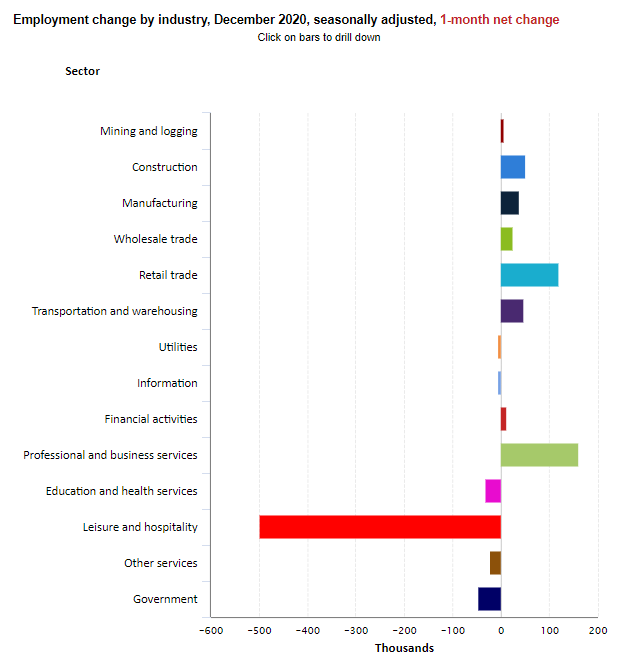The Labor Department reported that nonfarm payrolls fell by 140,000 in December and that the unemployment rate was unchanged at 6.7%. This was the first decline in jobs since April and reflects the recent increase in COVID-19 cases and efforts to contain the pandemic.
Job losses were concentrated in leisure and hospitality sectors (down 498,000 jobs) as bars and restaurants have been shut down due to the surge in coronavirus infections. Professional and business services, retail trade and construction saw gains. The consensus estimates for December had been for a gain of 50,000. Through December, 9.8 million jobs have been lost since February.
Health care added 39,000 jobs in December, with the largest gains occurring in hospitals and ambulatory health care services. Nursing care facilities lost 6,000 jobs in December, while jobs in community care facilities for the elderly lost 5,000 positions. Health care employed 502,000 fewer workers in December than in February.
 The December unemployment rate was unchanged from November after having fallen for seven consecutive months. It remains 3.2 percentage points above the pre-pandemic level of 3.5% seen in February, but well below the 14.7% peak seen in April.
The December unemployment rate was unchanged from November after having fallen for seven consecutive months. It remains 3.2 percentage points above the pre-pandemic level of 3.5% seen in February, but well below the 14.7% peak seen in April.
The number of long-term unemployed (those jobless for 27 weeks or more) was little changed from November at 4.0 million, but has increased by 2.8 million since February, suggesting that this continues to be a very challenging time for many Americans. Long-term unemployed persons account for 37.1% of the total number of unemployed persons.
The underemployment rate or the U-6 jobless rate fell to 11.7% in December from 12.0% in November. This figure includes those who have quit looking for a job because they are discouraged about their prospects and people working part-time but desiring a full work week.
Average hourly earnings for all employees on private nonfarm payrolls rose by $0.23 in December to $29.81, a gain of 5.1% from a year earlier. These increases largely reflect the disproportionate number of lower paid workers in leisure and hospitality who went off payrolls, which put upward pressure on the average hourly earnings estimates.
The labor force participation rate, which is a measure of the share of working age people who are employed or looking for work was steady 61.5% in December.
